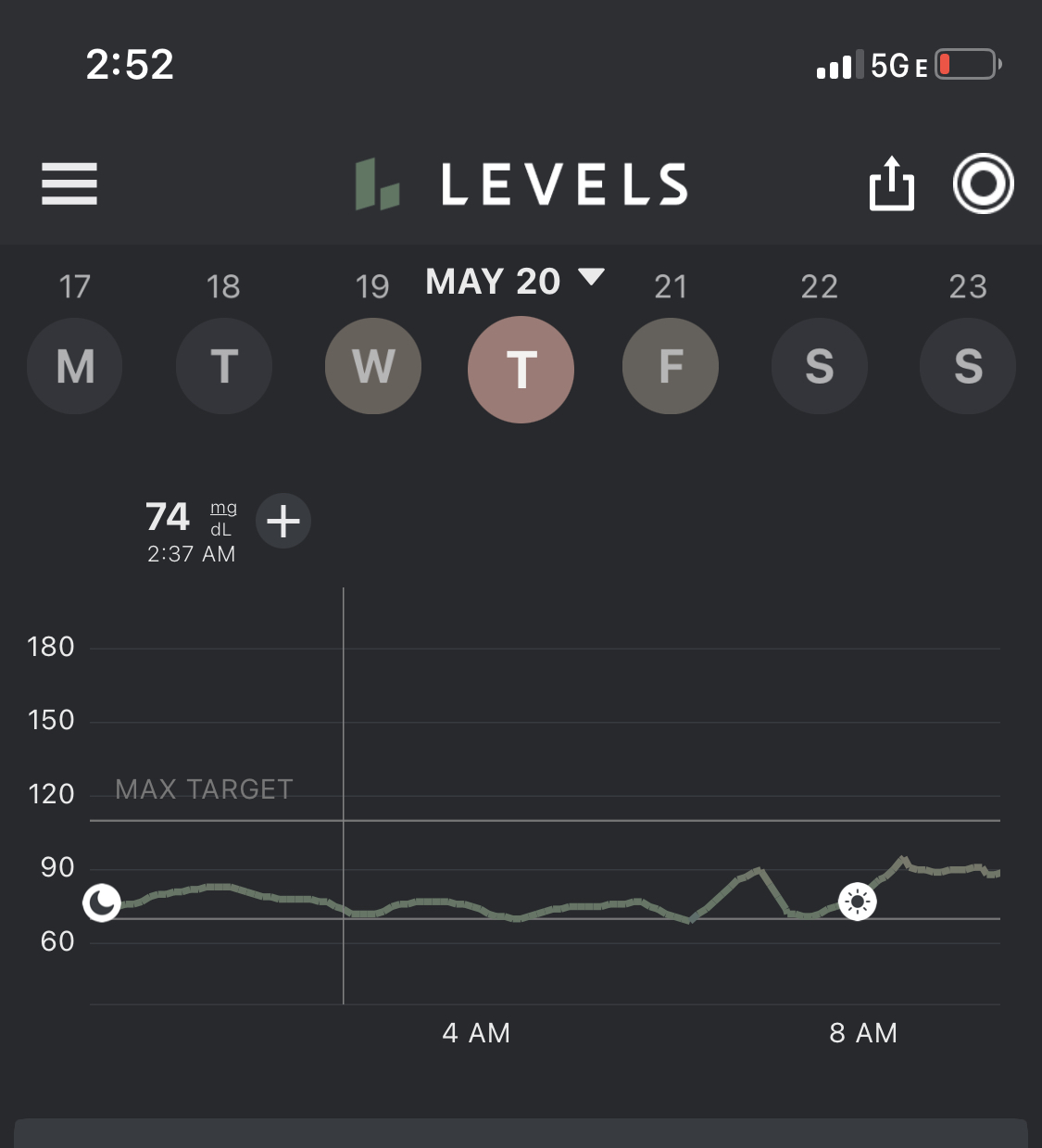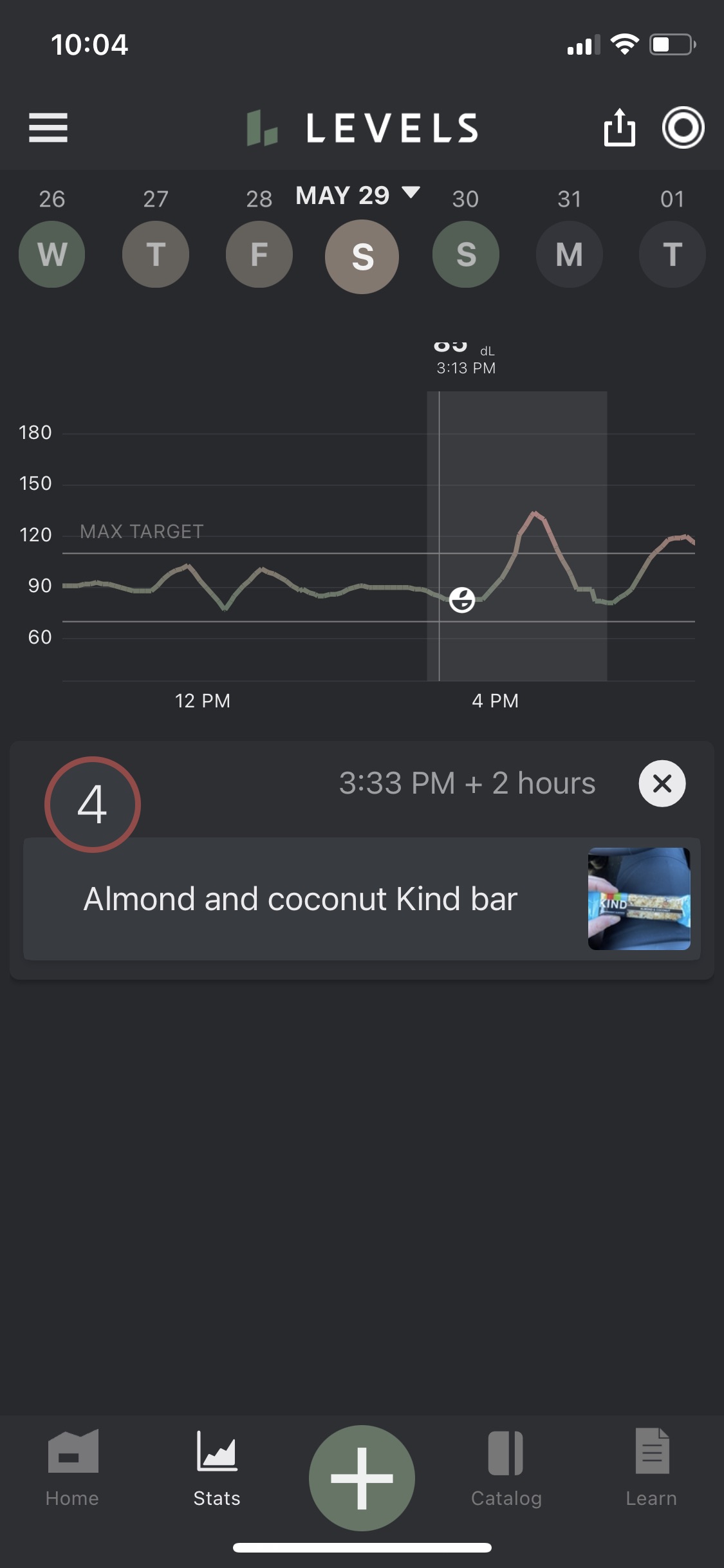The product I’m most excited about
In the last few years, I’ve become more interested in metabolic health and how to improve it. Metabolic syndrome contributes to most major chronic conditions and more than half of the top 10 causes of death (i.e. heart disease, cancer, diabetes, stroke, Alzheimer’s, etc.) Stabilizing sugar metabolism can help delay various metabolic diseases and improve overall health.
Last week I finally got my hands on a Levels device and service. Levels has developed an application which when paired with a Libre Continuous Glucose Monitor, allows you to track how your glucose levels are influenced by your diet and lifestyle choices, in real-time. I’m a week into wearing it and I’m not sure how I’ve ever functioned without one. It’s addictive and without a doubt the best wearable I’ve ever owned. Paired with the app, this data not only gives you awareness but quickly builds better habits.
I didn’t change how I ate for the first week to get a great baseline on how my typical diet affects my glucose levels. You want to find foods and a lifestyle that reduces or eliminates the daily glucose spikes and crashes, ones typical when you eat certain carbs. But we’re all genetically different and different foods affect people in a variety of ways. White rice might affect my glucose differently than someone else. Eating a carb-heavy meal while also drinking liquids can create a more steep glucose spike than not consuming water during the same meal. Consuming a croissant sandwich with sausage and egg has a better glucose effect than consuming the croissant on its own.
I’ve been learning some fascinating things about how certain foods affect my body. Here are a few notable examples:
A steak sandwich and fries for lunch didn’t go so well. As a result, I felt lethargic and a bit drained once the glucose level crashed.
A chicken shawarma salad (chicken, mayo, veggies) had almost no effect on my glucose levels. Given that both Nikki and I love this salad, I’ll indulge with less guilt.
Here is an interesting comparison between two nights of sleep. The first night, I stopped eating about 4 hours before bed, and thus my glucose levels were stable all night. The second night, I ate a carb-heavy meal 2 hours before bed and my glucose levels were erratic all night long.


I also learned that a burger (which is in some ways equivalent to the steak sandwich I ate, considering a bun and beef), has little effect on glucose when consumed with a salad vs. fries.
Here is a surprising find. On my way home from a weekend trip, I reached for a Kind almond coconut bar. A KIND Bar positions itself as a healthy snack and clearly states the low glycemic index. Well, I call BS.

The thing I love most about the CGM and Levels is how easy it is to build good habits. Once you see the havoc certain foods wreak on your body, you can’t unsee it. The effect, at least for me, is immediate. I no longer crave certain foods.
In the next month or so I plan on pulling down the raw glucose time-series data and seeing if I can correlate this with the sleep phase data from my Oura ring. I want to see if glucose levels throughout the day as well as close to sleep time affect my sleep quality.
I hope one day, CGM devices become accessible without requiring a doctor’s prescription. I believe that this is just the beginning of real-time biomarker wearables.